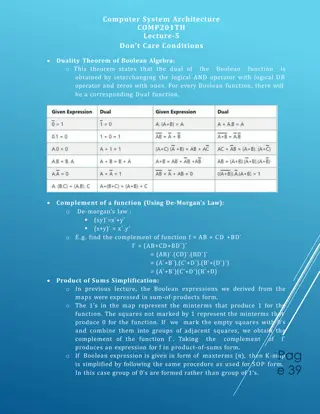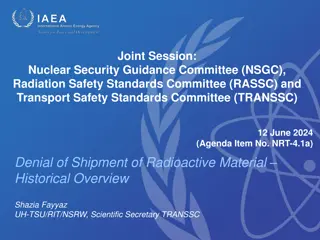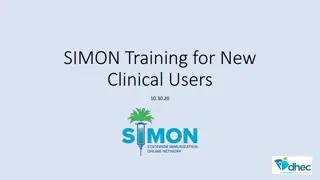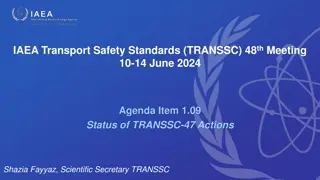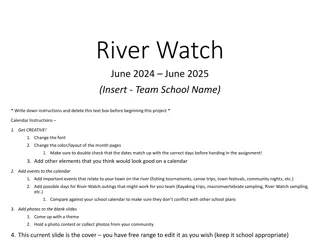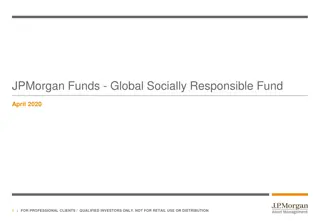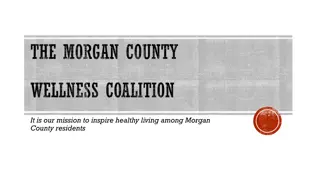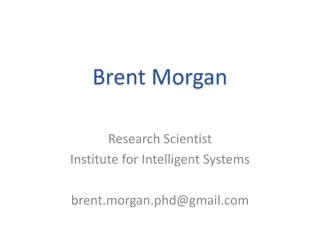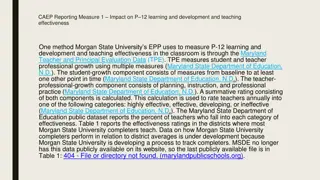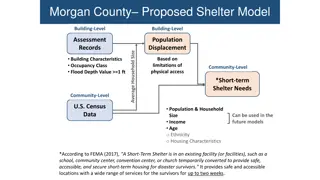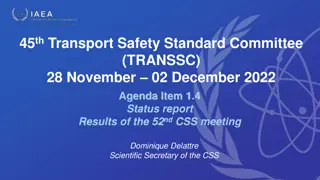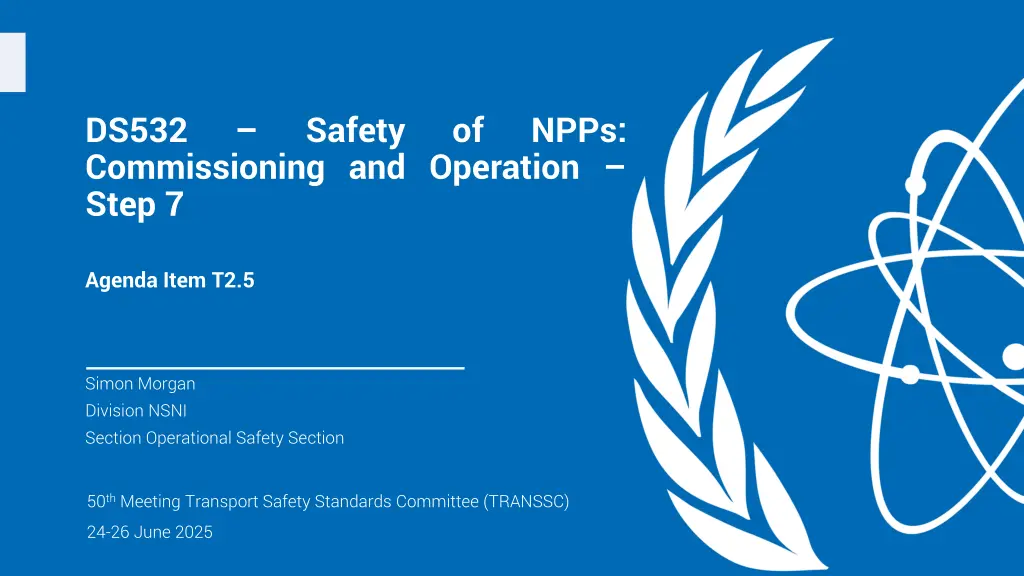
Safety Standards for Nuclear Power Plants: Key Updates
"Explore the latest revisions in safety standards for nuclear power plants, including hazard management programs, remote monitoring capabilities, and preparations for pandemics. Learn about the evolution of SSR-2/2 and its implications for operational safety."
Download Presentation

Please find below an Image/Link to download the presentation.
The content on the website is provided AS IS for your information and personal use only. It may not be sold, licensed, or shared on other websites without obtaining consent from the author. If you encounter any issues during the download, it is possible that the publisher has removed the file from their server.
You are allowed to download the files provided on this website for personal or commercial use, subject to the condition that they are used lawfully. All files are the property of their respective owners.
The content on the website is provided AS IS for your information and personal use only. It may not be sold, licensed, or shared on other websites without obtaining consent from the author.
E N D
Presentation Transcript
DS532 Commissioning and Operation Step 7 Safety of NPPs: Agenda Item T2.5 Simon Morgan Division NSNI Section Operational Safety Section 50thMeeting Transport Safety Standards Committee (TRANSSC) 24-26 June 2025
Background SSR-2/2 (Rev.1), Safety of Nuclear Power Plants: Commissioning and Operation. First published in 2011 and revised in 2016 to incorporate lessons from Fukushima Daiichi event. The timing of the revision is in accordance with NSNI s Medium-term plan for revision of safety standards and NUSSC priorities. Consultancy Meeting held in 2021 identified areas not adequately covered within SSR-2/2 (Rev.1) such as: Independent Oversight, Knowledge Management, Preparations for Pandemics, Potential operational changes resulting from new reactor designs -SMRs.
Overview of the Document The scope of SSR-2/2 remains essentially unchanged but does now include: multiple unit plants, evolutionary and innovative designs, and plants with alternative operating modes (autonomous systems, remote monitoring and intervention capabilities), transportable reactors and microreactors. The new information in DS532 includes - Harmonization with GSR Parts 1-7 and other applicable IAEA Safety Standards. - Proposed additional information on areas such as independent oversight, risk management, knowledge management, preparations for pandemic situations, commissioning and operational requirements for innovative reactor designs. - Other Changes - Structure of document revised. - Consistency and terminology checks with a range of associated Safety Guides published since 2016. For example, Safety Guides (SSG-48, SSG-50, SSG-54, SSG-70 to 76 ) & SRS 123.
Summary of Main Changes New Overarching Requirement Requirement 28: The operating organization shall establish and implement a hazard management programme to ensure that the plant is protected against internal hazards and external hazards identified by the safety assessments. New Associated Paragraphs Commissioning of factory-built modules (SRS 123) Multi-module control room hierarchy Enhanced monitoring & maintenance regimes for first-of-a- kind/novel SSCs and services Impact of non-water reactor circuit coolant on SSCs Use of remote monitoring for testing, inspection, maintenance and control New/Enhanced Associated Paragraphs Knowledge management process Leadership development programmes Role of safety committees Role of independent oversight Impact of epidemics & pandemics Commissioning of passive systems Designated design authority Qualification, selection & evaluation of contractors Management field observations and coaching
Status of the Document The DPP was approved by the Committees in February 2022 The first draft was developed in during 2023-2024 -The first draft now submitted for approved by the Committees for submission to MSs for comments -Table of resolution of Committees comments posted on the website -May 2025 Lead Committee: NUSCC Other review committees: RASSC, WASSC, TRANSSC and NSGC
SSC Member Comments: High Interest Comments were generally either to provide further clarity or accuracy of the terminology used in the paragraphs For example, The operating organization shall use an analysis technique that considers the actual or potential significance of events. The analysis shall be performed by suitably qualified and trained personnel who are competent in the subject matter under review. The operating organization shall establish a training program to ensure that all activities that might affect safety at the nuclear power plant are performed by suitably trained, qualified and competent persons. All operational limits and conditions and the basis for their derivation shall be defined, documented through a controlled process, and made available for the reference of all users requiring an understanding of the basis for the safe operation of the plant substantiated by a written statement of the reason for their adoption and their relation to safety. Operating personnel who are directly responsible for the conduct of operations shall be trained in on and shall be thoroughly familiar knowledgeable of with the operational limits and conditions in order to comply with the provisions contained therein.
SSC Member Comments: Not Addressed Terminology should only be used if it exists in IAEA Glossary exclude references to modules , corporate , microreactors . Temporary misalignment between SSR-2/1 and this revision of SSR-2/2: IAEA Safety Requirements SSR-2/1 (Rev.1) does not consider remote control rooms (please see requirement 65). Therefore, mentioning the possibility of remote control room in DS532 is inconsistent with paragraph 1.2 of DS532,which states that DS532 is harmonized with SSR-2/1 (Rev.1). Scope of revision: Delete the text transportable reactors and microreactors as not specifically mentioned in DPP. Representatives from NSGC wanted include more Security related information, another representative stated security considerations were outside scope of this document as its focus is on safety,so allsecurity references should be removed. The revision does not describe the relationship between principles and objectives for safety, and safety requirements and criteria.
SSC Member Comments: Summary 431 comments received from: Committee Comments # Accepted Rejected (Fully or partially) 20 countries 2 organisations NUSSC 396 212 184 All comments were addressed, and if requested, resolutions were discussed with Committee Members RASSC 9 5 4 WASSC 2 2 0 NSGC 23 4 19 There are no unresolved comments EPReSC 1 1 0 TRANSSC 0 0 0
Action Requested Approval by TRANSSC to move to Step 7 soliciting comments from Member States

